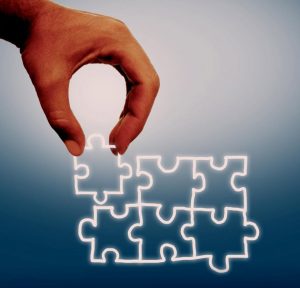Cisco moved to dismiss the plaintiff’s patent infringement complaint pre-lawsuit willfulness allegations. As the district court explained, the allegations in the first amended complaint asserted: “(i) that an investor of both the owner of the ‘951 Patent and of OpenDNS informed unspecified employees or agents of OpenDNS that certain OpenDNS technology infringed the ‘951Patent (ii) that defendant acquired OpenDNS in 2015 and (iii) that defendant incorporated the allegedly infringing OpenDNS technology into the Accused Security Products.”
To analyze whether the allegations were sufficient, the district court explained that “[a]t the motion to dismiss stage, courts have concluded that a plaintiff must “plead facts showing willfulness” in order to avoid dismissal of a willful infringement claim. Cont? Circuits LLC v. Intel Corp., No. CV16-2026 PHX DGC, 2017 WL 2651709, at *7 (D. Ariz. June 19, 2017) (collecting cases). In this respect, the complaint must allege, as a “prerequisite” to a willfulness claim, that the defendant had “[k]nowledge of the patent alleged to be willfully infringed.” See WBIP, LLC v. Kohler Co., 829 F.3d 1317, 1341 (Fed. Cir. 2016). Yet, a plaintiff has not plausibly alleged willful infringement if he alleges only that “the evidence shows that the infringer knew about the patent and nothing more.” Halo Elecs., Inc. v. Pulse Elecs., Inc., 136 S. Ct. 1923, 1936 (2016) (Breyer, J., concurring). As courts have sensibly concluded, the complaint must also allege facts that support a plausible inference that the defendant’s behavior was “egregious,” such as facts showing that defendant was put on notice or was otherwise subjectively aware of the risk that its conduct constituted infringement. See, e.g., Puget Bioventures, LLC v. Biomet Orthopedics LLC, 325 F. Supp. 3d 899, 911 (N.D. Ind. 2018); Finjan, Inc. v. Cisco Systems, Inc., No. 17-CV-00072-BLF, 2018 WL 7131650, at *4-5 (N.D. Cal. Feb. 6, 2018) (collecting cases).”
After reviewing the relevant case law, the district court noted that “[i]t is a close call whether the facts alleged in the First Amended Complaint are sufficient to support a plausible inference that, prior to the initiation of the instant infringement suit, defendant (i) knew of the ‘951 Patent and (ii) was subjectively aware of the risk that its conduct infringed the ‘951 Patent. In its response to defendant’s motion, plaintiff argues that OpenDNS’s knowledge of the ‘951 Patent and awareness of the infringing nature of its technology are attributable to defendant by virtue of defendant’s acquisition of OpenDNS in 2015.”
 Patent Lawyer Blog
Patent Lawyer Blog


 In analyzing the motion, the district court explained that it had previously “determined that this case was frivolous and that plaintiff had litigated it in an unreasonable manner, rending the exceptional and entitling defendant to an award of attorneys’ fees. None of those underlying facts have changed, and plaintiff does not argue that they have.”
In analyzing the motion, the district court explained that it had previously “determined that this case was frivolous and that plaintiff had litigated it in an unreasonable manner, rending the exceptional and entitling defendant to an award of attorneys’ fees. None of those underlying facts have changed, and plaintiff does not argue that they have.” In this patent infringement action, the defendant moved to dismiss the plaintiff’s complaint for the plaintiff’s failure to participate in discovery and for ignoring several court orders. The motion explained that dismissal sanctions were appropriate in the light of, among other things, the plaintiff’s failure to comply with court orders, sanction order and to appear for a court hearing.
In this patent infringement action, the defendant moved to dismiss the plaintiff’s complaint for the plaintiff’s failure to participate in discovery and for ignoring several court orders. The motion explained that dismissal sanctions were appropriate in the light of, among other things, the plaintiff’s failure to comply with court orders, sanction order and to appear for a court hearing. In this patent infringement action, the plaintiff, International Designs Corporation, LLC (“IDC”), moved to disqualify the counsel for defendant Hair Art Int’l, Inc. (“Hair Art”). IDC moved to disqualify counsel for Hair Art on the grounds that Hair Art’s counsel also represented/represents an entity named Halo Couture, LLC, a California limited liability company (“HC1”) and, potentially, Halo Couture, LLC, a Delaware limited liability company (“HC2”), which were apparently “sister companies” of IDC and share a common parent.
In this patent infringement action, the plaintiff, International Designs Corporation, LLC (“IDC”), moved to disqualify the counsel for defendant Hair Art Int’l, Inc. (“Hair Art”). IDC moved to disqualify counsel for Hair Art on the grounds that Hair Art’s counsel also represented/represents an entity named Halo Couture, LLC, a California limited liability company (“HC1”) and, potentially, Halo Couture, LLC, a Delaware limited liability company (“HC2”), which were apparently “sister companies” of IDC and share a common parent. In this patent infringement action, the defendant, Playmonster LLC (“Playmonster”), requested that the district court stay discovery during the pendency of its forthcoming dispositive motion. As part of its request, Playmonster contended that a dispositive motion “would be the most efficient resolution of this case,” and that a stay of discovery would promote judicial efficiency and conserve the Parties’ resources, which would include reducing the attorney’s fees that would be spent on the case should the dispositive motion be granted.
In this patent infringement action, the defendant, Playmonster LLC (“Playmonster”), requested that the district court stay discovery during the pendency of its forthcoming dispositive motion. As part of its request, Playmonster contended that a dispositive motion “would be the most efficient resolution of this case,” and that a stay of discovery would promote judicial efficiency and conserve the Parties’ resources, which would include reducing the attorney’s fees that would be spent on the case should the dispositive motion be granted. Stuebing had previously served multiple discovery requests, including interrogatories and document requests. Over a year after responses to the discovery requests were due, the district court ordered the defendant to fully respond to the requests in several different court orders. Despite these orders, the defendant provided Stuebing with incomplete discovery information.
Stuebing had previously served multiple discovery requests, including interrogatories and document requests. Over a year after responses to the discovery requests were due, the district court ordered the defendant to fully respond to the requests in several different court orders. Despite these orders, the defendant provided Stuebing with incomplete discovery information. As explained by the district court, Bayer asserted that the license resulting from the hypothetical negotiation would be a non-exclusive, running royalty license between competitors, and of Dr. Rausser’s four selected licenses, only one was a non-exclusive license, two were between competitors, and none of them used a running royalty.
As explained by the district court, Bayer asserted that the license resulting from the hypothetical negotiation would be a non-exclusive, running royalty license between competitors, and of Dr. Rausser’s four selected licenses, only one was a non-exclusive license, two were between competitors, and none of them used a running royalty. In the ongoing litigation war between Qualcomm and Apple, spanning multiple forums around the country, Qualcomm moved to exclude Apple’s technical experts’ reliance on certain license agreements by asserting that the agreement involved technology that was not sufficiently comparable. After reviewing the license agreements, the experts’ opinions, and the law, the district court concluded that Qualcomm’s motion should be granted.
In the ongoing litigation war between Qualcomm and Apple, spanning multiple forums around the country, Qualcomm moved to exclude Apple’s technical experts’ reliance on certain license agreements by asserting that the agreement involved technology that was not sufficiently comparable. After reviewing the license agreements, the experts’ opinions, and the law, the district court concluded that Qualcomm’s motion should be granted. patents at issue here. The Federal Circuit has cautioned “that ‘district courts performing reasonable royalty calculations [must] exercise vigilance when considering past licenses to technologies other than the patent in suit,’ and ‘must account for differences in the technologies and economic circumstances of the contracting parties[.]’” VirnetX, Inc. v. Cisco Systems, Inc., 767 F.3d 1308, 1330 (Fed. Cir. 2014) (citations omitted). “When relying on licenses to prove a reasonable royalty, alleging a loose or vague comparability between different technologies or licenses does not suffice.” LaserDynamics, Inc. v. Quanta Computer, Inc., 694 F.3d 51, 79 (Fed. Cir. 2012).
patents at issue here. The Federal Circuit has cautioned “that ‘district courts performing reasonable royalty calculations [must] exercise vigilance when considering past licenses to technologies other than the patent in suit,’ and ‘must account for differences in the technologies and economic circumstances of the contracting parties[.]’” VirnetX, Inc. v. Cisco Systems, Inc., 767 F.3d 1308, 1330 (Fed. Cir. 2014) (citations omitted). “When relying on licenses to prove a reasonable royalty, alleging a loose or vague comparability between different technologies or licenses does not suffice.” LaserDynamics, Inc. v. Quanta Computer, Inc., 694 F.3d 51, 79 (Fed. Cir. 2012). In a patent infringement action, Takeda Pharmaceuticals America, Inc., and Takeda Pharmaceuticals U.S.A., Inc.’s (collectively, “Takeda”) filed a motion to disqualify Baker Botts, L.L.P. (“Baker Botts”) from representing Defendants Zydus Pharmaceuticals (USA) Inc. and Cadila Healthcare Limited (collectively, “Zydus”). Takeda moved to disqualify Baker Botts from representing Zydus based on Baker Botts’ alleged previous representation of Ethypharm S.A. (“Ethypharm”) in earlier litigation involving Takeda’s Prevacid® SolutabTM product.
In a patent infringement action, Takeda Pharmaceuticals America, Inc., and Takeda Pharmaceuticals U.S.A., Inc.’s (collectively, “Takeda”) filed a motion to disqualify Baker Botts, L.L.P. (“Baker Botts”) from representing Defendants Zydus Pharmaceuticals (USA) Inc. and Cadila Healthcare Limited (collectively, “Zydus”). Takeda moved to disqualify Baker Botts from representing Zydus based on Baker Botts’ alleged previous representation of Ethypharm S.A. (“Ethypharm”) in earlier litigation involving Takeda’s Prevacid® SolutabTM product.